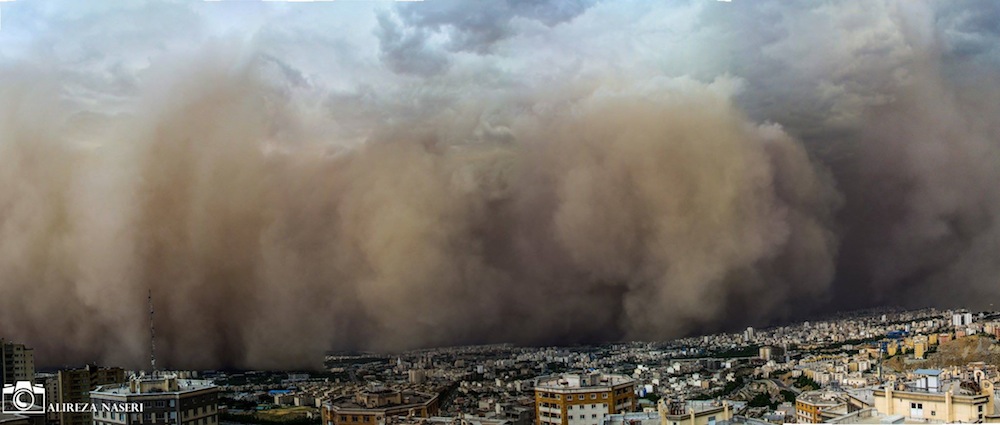Deadly Wall of Dust Devours Tehran in New Photo

A deadly dust storm bears down on Tehran, Iran, in a stunning new photograph taken yesterday (June 2).
This storm, or haboob, killed at least five people, according to Iran's state television. Photography student Alireza Naseri snapped this photo of the incoming wall of dust from his room in Tehran's Aghdasieh neighborhood, which sits at the foot of the mountains that surround the city.
"The feeling for me was more awe than fear," Naseri told Live Science.
Deadly dust
"Haboob" is the Arabic word for blasting or drifting, which describes precisely what these storms do. In front of a thunderstorm, air forced downward picks up and carries dust and debris, according to the National Oceanic and Atmospheric Administration (NOAA). Typically, these storms last no more than 30 minutes, but winds blowing 60 mph (97 km/h) can create a wall of dust 10,000 feet (3,048 m) high in minutes.
Haboobs are common in dry, dusty regions. They happen frequently in the Sahara and on the Arabian Peninsula, and also occur in the American West. Phoenix, Arizona, in the Sonoran Desert, experiences haboobs, as do parts of Texas.
The strong winds that pick up the dust can also damage trees and buildings. Dust may cause health problems in the young, old and ill, and can also require flights to be diverted.
Get the world’s most fascinating discoveries delivered straight to your inbox.
Tehran's storm
State media reported that winds in Tehran's Monday storm reached up to 68 mph (110 km/h). Reports of deaths varied between four and five, and more than 50,000 homes and business lost power. Images taken during the storm show downed trees, blowing debris and dust blotting out the sun. The storm occurred at 5.30 p.m. local time (9 a.m. Eastern Time).
Naseri said that he had never seen a storm of this size in Tehran. He took the photo of the storm using a Canon 7 D. Unstable, stormy weather continues today in Tehran, according to local media.
Live Science writer Bahar Gholipour contributed reporting.
Editor's Note: If you have an amazing weather or general science photo you'd like to share for a possible story or image gallery, please contact managing editor Jeanna Bryner at LSphotos@livescience.com.
Follow Stephanie Pappas on Twitter and Google+. Follow us @livescience, Facebook & Google+. Original article on Live Science.

Stephanie Pappas is a contributing writer for Live Science, covering topics ranging from geoscience to archaeology to the human brain and behavior. She was previously a senior writer for Live Science but is now a freelancer based in Denver, Colorado, and regularly contributes to Scientific American and The Monitor, the monthly magazine of the American Psychological Association. Stephanie received a bachelor's degree in psychology from the University of South Carolina and a graduate certificate in science communication from the University of California, Santa Cruz.


